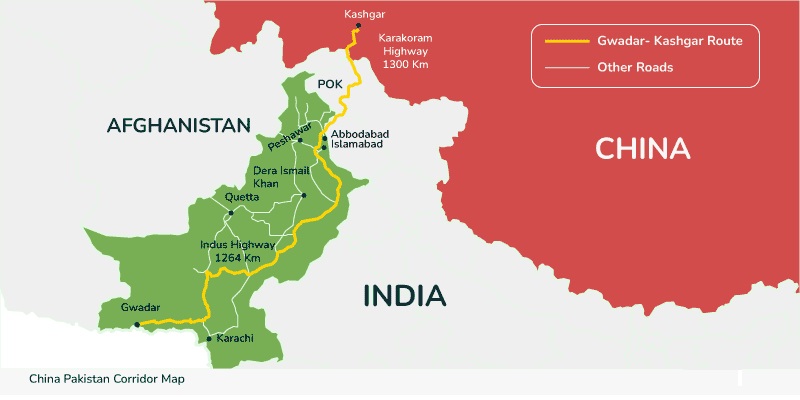Why in the News?
Pakistani PM is on a formal visit to China to attend the formal announcement of the second phase of the China-Pakistan Economic Corridor (CPEC-II).
About CPEC-II
- CPEC’s next phase shifts focus from infrastructure and energy to sectors like agriculture, Pakistan Railways’ Main Line-I (ML-1) upgrade, and realignment of the Karakorum Highway.
- CPEC was initiated in 2015 as part of President Xi Jinping’s Belt and Road Initiative (BRI).

Why CPEC-II?
|
Belt and Road Initiative (BRI)
|
India’s Concerns
- Sovereignty Concerns: India expresses reservations as CPEC traverses through Pakistan-occupied Kashmir (PoK), challenging territorial sovereignty and potentially bolstering Pakistan’s claim over the region.
- Geostrategic Implications: The expansion of Gwadar port under CPEC extends China’s “String of Pearls” around India, prompting concerns over regional power dynamics.
CPEC’s Progress so Far
- Mixed Outcomes: The initial phase of CPEC primarily addressed infrastructure, energy, and port development projects, with progress showing variations.
- Project Status: While several power projects have been completed, significant delays and challenges persist in transport-related projects and Special Economic Zones (SEZs).
Challenges and Roadblocks
- Slow pace: Gwadar, despite being the epicentre of multibillion-dollar projects, lacks basic necessities like reliable access to water and electricity, let alone other facilities.
- Baloch freedom movement: This is another impediment to the stalled project where Chinese officials are targeted and killed.
- Consistent security threat: China is also seeking to deploy its Army in the CPEC projects, to which Pakistan has contested.
PYQ:[2018] The China-Pakistan Economic Corridor (CPEC) is viewed as a cardinal subset of China’s larger ‘One Belt One Road’ initiative. Give a brief description of CPEC and enumerate the reasons why India has distanced itself from the same. (150 Words, 10 Marks) [2016] ‘Belt and Road Initiative’ is sometimes mentioned in the news in the context of the affairs of (a) African Union (b) Brazil (c) European Union (d) China |

